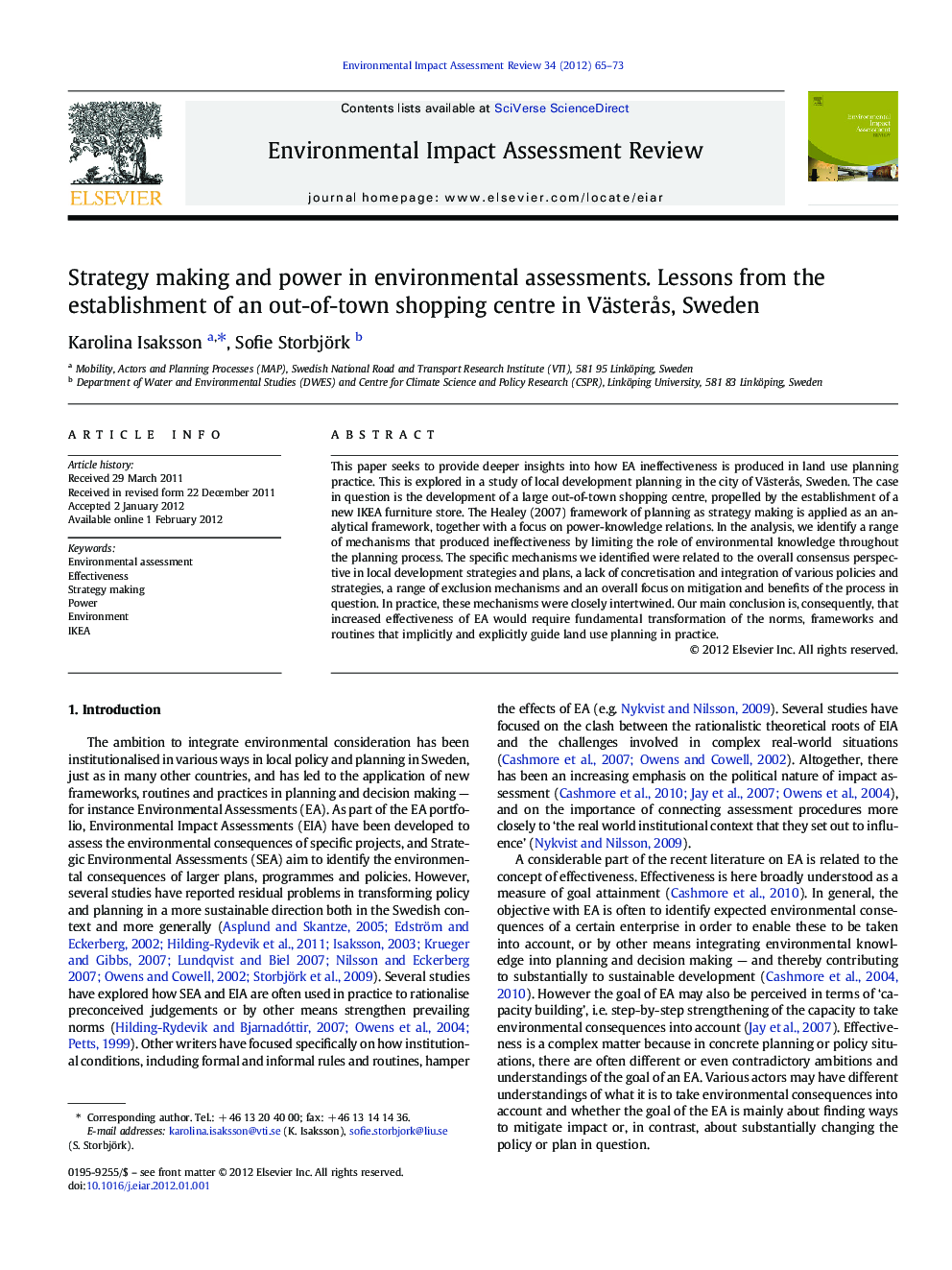| Article ID | Journal | Published Year | Pages | File Type |
|---|---|---|---|---|
| 1052891 | Environmental Impact Assessment Review | 2012 | 9 Pages |
This paper seeks to provide deeper insights into how EA ineffectiveness is produced in land use planning practice. This is explored in a study of local development planning in the city of Västerås, Sweden. The case in question is the development of a large out-of-town shopping centre, propelled by the establishment of a new IKEA furniture store. The Healey (2007) framework of planning as strategy making is applied as an analytical framework, together with a focus on power-knowledge relations. In the analysis, we identify a range of mechanisms that produced ineffectiveness by limiting the role of environmental knowledge throughout the planning process. The specific mechanisms we identified were related to the overall consensus perspective in local development strategies and plans, a lack of concretisation and integration of various policies and strategies, a range of exclusion mechanisms and an overall focus on mitigation and benefits of the process in question. In practice, these mechanisms were closely intertwined. Our main conclusion is, consequently, that increased effectiveness of EA would require fundamental transformation of the norms, frameworks and routines that implicitly and explicitly guide land use planning in practice.
► We analyse how EA-ineffectiveness is produced in land use planning practice. ► Several mechanisms produce EA-ineffectiveness throughout the whole planning process. ► These mechanisms are often closely intertwined and mutually reinforcing each other. ► Enhancing EA-effectiveness requires a fundamental shift of the norms, frameworks and routines shaping planning practice.
